Essay - Visitors Can Damage Historical Sites. Should These Places Still Be Open to Tourists?
World Heritage -Why preserve, conserve and protect?
The theme for World Heritage day this year - 'Complex Pasts: Diverse Futures', not only highlights the urgency to preserve, conserve and uplift the legacies of monuments and cultures, but also the desperate need to critically analyse, comprehend and recognise the diversity around us.
In that way, we can look at the Taj as a symbol of heritage which is documented and studied for its history and architecture. It can also be seen as a symbol of unity in diversity as its reach goes beyond a particular religion. Considering these aspects, the government of India also takes pride in managing the heritage site and maintaining it as an international tourist attraction. Maybe we can learn from the success of Taj Mahal and apply the logic and efforts to other heritage sites in India.
Culture and Heritage shapes human society
The identity of a nation, region, community or a group lies in its past- its historical and cultural heritage which is unique to that group or society and reflects the rich and diverse creations of humankind. What comes to one’s mind when you hear the term cultural heritage- arts, crafts, and monuments? Cultural Heritage is the legacy of physical artefacts and intangible attributes of a group or society that are inherited from the past generations, maintained in the present and bestowed for the benefit of future generations. Cultural Heritage includes tangible culture such as buildings, monuments, landscapes, books, works of art and artefacts. It also includes intangible cultural traditions or living expressions inherited from our ancestors and passed on to our descendants, such as oral traditions, performing arts, social practices, rituals, festive events, knowledge and practices concerning nature and the universe or the knowledge and skills to produce traditional crafts as well as folklore, language and natural heritage such as landscapes and biodiversity. Whatever the shape, size and form of a heritage it requires efforts to protect and safeguard it. But why do we need to preserve, conserve and protect?
Why preserve, conserve and protect?
Culture and heritage shapes human society. We all grew up on stories- mythologies, fables, historical events glorifying our past which helped us construct our identities. Human race has always relied on its past to build the present and construct its future. Generations have lived before us and have shaped the world we reside in. It is important to protect our heritage as it adds character and distinctiveness to the place, region or community and hence provides a sense of identity.
Heritage, tangible as well as intangible, has a positive influence on many aspects of the way a community develops. Preservation, conservation and protection is highly valuable because:
- The historic environment is a proven source of benefit to local economies, particularly through tourism.
- An attractive heritage benefits in attracting external investment as well as maintaining existing businesses and not just tourism.
- Adaptive reuse of heritage buildings is an important factor in creating sustainable communities.
- A greater social inclusiveness can be achieved through heritage protection.
- Heritage places are an excellent educational resource for people of all ages.
- World Heritage properties also harbor options for society to mitigate and adapt to climate change through ecosystem benefits, such as water and climate regulation as well as carbon that is stored in world forest sites.
World Heritage Day
April 18, every year, marks World Heritage Day. The origins of this special day can be traced back to 1982, when the ICOMOS-the International Council for Monuments and Sites established this day as the International Day for Monuments and Sites. Later, UNESCO adopted this day as the World Heritage Day during its 22nd General conference. A theme is picked every year for the commemoration of the day. The theme for 2021 being, “Complex Pasts: Diverse Futures”. The theme not only highlights the urgency to preserve, conserve and uplift the legacies of monuments and cultures, but also the desperate need to critically analyse, comprehend and recognize the diversity around us. The global networks of World Heritage help raise awareness on impacts of climate change on human societies and cultural diversity, biodiversity and ecosystem services as well as world’s natural and cultural heritage.
Challenges for management of Heritage sites
A few cities from India such as Ahmedabad, Jaipur, Gwalior and Orchha are listed as UNESCO’s World Heritage Cities. Every city is promoted by the local governments by identifying its unique heritage in terms of architecture observed in palaces, forts, temples, individual houses or neighbourhoods. Due to the recognition by UNESCO, these cities get a chance of publicity and attracting tourists and may also gain some financial assistance from UNESCO for conservation of the sites. However, India has immense wealth of heritage sites which also require attention and preservation. Only select sites, depending upon its significance, get more attention for conservation.
It is challenging to manage and protect the vast rich cultural heritage of India especially due to lack of proper funds. Moreover, apathy on the part of common public, government and other stakeholders results in complete neglect of sites of historical and cultural significance. Lack of latest technology and methods for conservation can also be a challenge in the current ever-increasing pollution and climate change. What can we as citizens do? Apart from trained manpower and funds can we as citizens come together and adopt a site? Use available resources to preserve, and protect the local heritage sites which in turn can draw attention from larger funding bodies for safeguarding our cultural heritage.
It is our civic responsibility to acknowledge and honor the heritage and traditions of not only our own communities but also those of others. We must also make the necessary efforts to overcome the outdated and archaic narratives and ideologies which will help lead us to a more tolerant and respectable future. Our involvement in the World Heritage Day is a step in the right direction to achieve our goals of inclusivity and understanding the multiplicities of the various communities and cultures across the world. We must pledge to contribute to this great cause of honoring the reverential heritage of monumental sites as well as the multifaceted heritage of diverse cultures and communities across the world.
From Australia's bleached corals to over-tourism in Venice, the World Heritage sites are in danger
Several spots risk losing their UN World Heritage status because of environmental damage.
In a draft report released ahead of a key meeting next month, the UN's Educational, Scientific and Cultural Organization (UNESCO) recommended Monday a major revamp of the heritage list.
Here are some of the sites that risk losing their treasured Heritage Site status, a move that could seriously dent their tourist appeal.
Great Barrier Reef: in danger
Stretching 2,300 kilometres (1,400 miles) along Australia's northeast coast, the world's largest coral reef system, a huge draw for tourists, has been battered by global warming.
In the past five years rising ocean temperatures have caused three episodes of mass coral bleaching, when the invertebrates expel the algae living in their tissues that supply a crucial source of nutrients.
The site, which has also been lashed by cyclones and attacked by crown-of-thorns starfish, has lost half its corals since 1995.
Canberra twice narrowly avoided having UNESCO put the reef on its endangered list, in 2015 and 2017.
Four years on, UNESCO acknowledges the government's efforts to shore up the site but notes that Australia's own outlook for the ecosystem has been downgraded from "poor" to "very poor."
It recommends adding the reef to its list of sites in danger, a first step towards it being stripped of its World Heritage status.
Venice: in danger
The former city-state of Venice was inscribed on the Heritage list in 1987 as "an extraordinary architectural masterpiece in which even the smallest building contains works by some of the world's greatest artists."
But for years now UNESCO has been echoing warnings by residents' groups about the damage caused by overtourism, saying it is driving an exodus from the city.
While noting that tourist numbers "drastically decreased" during the Covid-19 pandemic, UNESCO said the health crisis "also highlighted the need for more sustainable tourism management and the development of a more diverse resilient economic basis."
It also noted that although Venice recently banned giant cruise ships from docking inside the city centre at UNESCO's request, "it has no practical effect, as no alternative exists for the mooring of these large ships."
It proposes therefore to also add Venice to its endangered heritage list.
Budapest: in danger
The central European city on the Danube, which was conquered by the Turks and destroyed during World War II, won its UN listing as "an outstanding example of urban development."
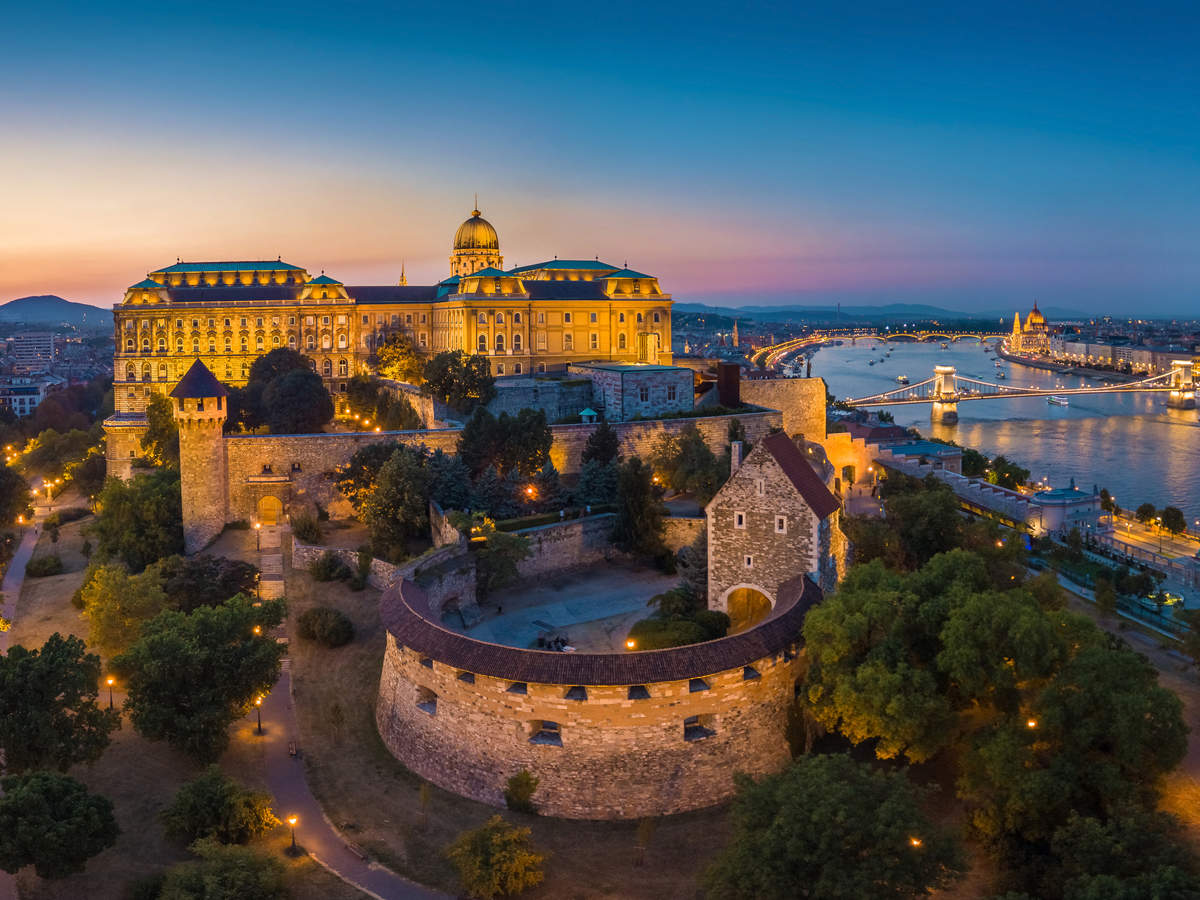
But it now risks being delisted over a major renovation of the Buda Castle quarter, aimed at restoring it to its pre-World War II glory.
UNESCO argues that the reconstruction flouts international conservation norms and called for the work be halted.
The body said that the works are driven mainly by "ideological" considerations aimed at promoting Hungary's pre-Communist "national identity," and go beyond the minimal intervention recommended for historical monuments.
As a result it has called for Budapest to be placed on the endangered heritage list.
Liverpool: faces delisting
Liverpool played a major role in Britain's emergence as a pre-eminent trading power in the 18th and 19th centuries, with its port serving as a hub for the mass movement of people and goods between Europe and America.
But the redevelopment of its historic waterfront and northern dock area have landed it in hot water with UNESCO.
The agency has chided the city for failing to cap the heights for new buildings and said that plans for a new football stadium in Bramley-Moore Dock will lead to a "further deterioration" of the waterfront's "outstanding universal value."
Saying that years of warnings have gone unheeded, UNESCO recommends taking Liverpool off the World Heritage list altogether.
Tanzania game reserve: faces delisting
Selous Game Reserve gained World Heritage status in 1982 as one of the biggest remaining wilderness expanses in Africa, teeming with wildlife including elephants and black rhinos.
But in 2014, it was downgraded to the endangered heritage list as poachers began to decimate the elephant population.
The UN has also expressed alarm over the sale of logging rights inside the reserve as well as more recent plans for the construction of a dam on the Rufiji river, the country's largest.
Lamenting Tanzania's decision to forge ahead with the project, despite the ecological threat to the floodplain, UNESCO says the reserve's "outstanding" character has suffered "irreversible" damage and recommended that it be taken off the World Heritage list.
Will pivoting to domestic travel wither international tourism?
The restrictions on international travel have forced many tourism destinations to focus on the domestic market in order to sustain the tourism industry. Countries like Malaysia, Singapore, Japan, Korea have already announced schemes focusing on domestic visitors.
Everything in this world now is defined in terms of Before Covid (BC) and Post Covid (PC) because this phenomenon has altered much of the world as we had seen it. We will get to know the real extent of the damage only in the coming months. The tourism industry has been completely ravaged by the effects and we are still coming to terms with it. One of the casualties of the pandemic has been the restrictions on international travel, with most countries banning or severely restricting free travel. Before pandemic, talks were on how to ease travel barriers and countries were liberalising visa regimes, but now it is back to square one and many nations have imposed travel bans which are expected to be in force well into the second half of next year. It is now to be seen that, without the widespread use of a vaccine, how many countries would go back to a barrier free regime especially for citizens of nations that have been worst affected by the pandemic.
The restrictions on international travel have forced many tourism destinations to focus on the domestic market in order to sustain the tourism industry. Countries like Malaysia, Singapore, Japan, Korea have already announced schemes focusing on domestic visitors. Singapore has announced a 45-million-dollar campaign called ‘Rediscover Singapore’ which encourages its residents to go on ‘staycations’ within the island. There is also talk of a ‘Tourism Credit’ scheme which would be provided by the government to citizens and that could be encashed at local attractions/hotels. Japan’s ‘Got to Travel’ scheme also provides subsidies for domestic travel. Other countries, including India, have also announced an inward-looking travel policy for the time being. This has predictably led to consternation amongst many in the industry mainly DMCs who are focused on international clients.
It is now almost a given fact that it would take another 2-3 years for international travel to get back to the level it was at pre-Jan 2020 and therefore it is quite justified that destinations look at other avenues to at least support the infrastructure created till such time. The question remains if destinations should pause international tourism completely for a couple of years till the situation normalises or should big destinations think of starting international tourism in phases or at some locations and then go back to the pre-covid normal when confidence returns. There are many models being tossed around and I believe that each destination would have to take the model that suits it best.
There is also the question of whether a tourist destination can survive with just domestic tourists or if international visitors are also required to justify the investments. Internationally, while the large western destinations like the US and Europe (taken as one entity for sake of comparison only) have more or less survived on domestic visitors with international visitors being the icing on the cake, it has not been so for destinations in Asia. Destinations like those in South East Asia have traditionally survived on international tourism with domestic tourism being negligible or not having enough buying power. Large countries like China and India of course have huge domestic travel numbers but still need international visitors to provide much needed foreign exchange as well as to justify the investment in high-end and quality facilities.
India has for now focussed on domestic tourism and most policy makers are advocating that at least for the next couple of years domestic visitors would drive the tourism economy. The Ministry of Tourism has launched the commendable ‘Dekho Apna Desh’ campaign which is aimed at promoting travel within and discovering the treasures that the country has to offer. Many of the tour operators are also shifting their focus towards domestic visitors and states are working on aggressive campaigns. While for now it may seem a pragmatic strategy and all the experts have converged on the idea, one should not lose sight of the international visitor. The country needs to work on strategies to woo the international visitor and create a buzz around Indian destinations after working out a clear cut plan so that when full fledged international travel is possible there is enough interest in India and this can be sold effectively and at a premium. This scenario is applicable for both leisure and business travel including the MICE sector. Of course, domestic tourism is also dependent on how the economy is going to perform over the next 8-10 months. However, indications are that with the increase in economic activity there would be at least a few number of travellers who would want to take holidays.
This requires effective coordination between all the sectors of the tourism industry and has to be worked out strategically so that there is one single plan of action. While being pragmatic is low risk, one needs to aggressively take on the situation and work at turning crisis into opportunities. The industry as a whole should take this pause to work on product, price, place and promotion of the Indian tourism and look at a reboot so that when the opportunity arises it can be taken advantage of .
I would like to suggest the following measures by each sector at least to begin a discussion that can be taken forward at more learned and capable levels of implementation.
- Hospitality sector: The hospitality sector especially the luxury segment is going to be most hit by the pivot to domestic. It would not be feasible for this sector to cater exclusively to domestic travellers and they would increasingly look at business travellers and events to plug the gap. However, it provides a good opportunity to rework on revenue models and invest more in technology and innovative products messaging at least to break even till the situation normalises. While many domestic visitors may not be able to afford the normal per night rate at the Rambagh Palace, a honeymooning couple or someone celebrating an anniversary may go for one night or be enticed with a special lunch and afternoon (staycation) package so that at least the RevPAR is stabilised. The emphasis on F&B products as a major revenue stream that had taken place during the last two months can also be developed further. There also needs to be a relook on the ‘Big Fat Indian Wedding’ scenario and hybrid facilities may be developed which can give the iconic location for the wedding with the many satellite locations being used to distribute costs.
- DMCs/ Inbound operators: The DMCs are the worst affected and many are staring at dire situations as their main area of expertise is catering to international visitors. There is unfortunately going to be a big churn in this sector and many smaller companies may not survive. However, it is a given that once international travel is restored it is these companies only that will have the expertise and the contacts to cater to the expected flush of demand. It is here that the trade associations and the government should step in to help companies retain their unique skills and, if necessary, have training initiatives to get more skills for the employees so that they are equipped for the future. The trade associations should also, with a single focus, lobby the government for financial assistance to the most affected sector rather than giving a full laundry list. The old adage that God also helps only those who help themselves stand true here and the industry should get together to use their expertise collectively and develop new products and revenue streams which can then be tested first with the domestic markets and then sold internationally. The idea should now be to provide experiential tours at competitive prices and not just site visits.
- Government support:
The government needs to work on improving the infrastructure capability
and developing new destinations and products. Technology can be used to
effectively identify visitor preferences and patterns as well as
provide information utilising the latest advances in AR and VR. This can
continue to also act as a tool for effective contact tracing, etc. if
and when such a need arises. The pause can be used to upgrade facilities
in the various destinations and upgrade the infrastructure through
linking with various schemes like MNREGA. The marketing and promotional
activities on the international side are understandably at a standstill
but this is the time to seriously rethink on our strategies and develop
clear messaging based on wants and aspirations so that when
international travel reopens effectively, the destination is ready to
cash in on the bonanza. The examples of destinations like Iran, Sri
Lanka and Myanmar which were closed for many years due to various
reasons and the boom they witnessed when travel was allowed is there for
all of us to see. However, such a demand can fall flat on its face if
the visitor is not given what they expect and is disappointed.
Meanwhile, a robust and targeted social media campaign along with
constant engagement with the stakeholders is the only way out. It is in
this context, the overseas missions would be useful and should be used
effectively, sooner than later. While a rethink on their role and
function is necessary and imperative, the network of foreign offices of
the Ministry of Tourism should be utilised to ‘keep the flag flying’ and
engage with the FTOs till such times that Indian private industry can
look at free travel to these markets.
- It could also be useful to develop a tourism friendliness ranking amongst the states to bring in a spirit of competition (like the Ease of Doing Business rankings) and this should be judged on parameters of not only the attractions/facilities available but how they are utilised to effectively develop, market and project the tourism industry of that state.
Amongst all these, one should not forget the backbone of the tourism industry, which is its human resources. There are many, especially in the middle and lower rungs, and young professionals who have been literally hung out to dry by everyone; the Government, the leaders and the trade and many are prepared to leave the industry. This would be a disaster and would lead to a ‘brain drain’ and more importantly ‘passion drain’ which would be hard to fulfil when the need really comes. While, it is understood that the Governments would come up with schemes, and there is a commendable example of the Kerala State Government which has helped professionals by some grants, the industry also needs to get together and devise plans for supporting them to tide over the difficult times.
All in all, while a pivot to domestic travel is sound pragmatic economics, one should not forget that the history of modern tourism started with the young aristocrats of Europe being sent on ‘Grand Tours’ to experience, understand and learn about different cultures. So, let us hope that we return to a situation where free international travel is possible and there are minimum restrictions for people to fulfil their travel dreams. When that time comes, we in the tourism industry must be ready and prepared to help them realise those dreams.
==================================
Irresponsible tourism without eco-consciousness needs to be regulated: Stephan Marchal
The Founder Director of Himalayan Ecotourism, a community-based social enterprise based in Great Himalayan National Park (GHNP) region, believes that the new travel trend to offbeat destinations will do more damage than good to ecologically fragile ecosystems in the long run.
 Stephan Marchal,
a Belgian national, who has been working in the Great Himalayan
National Park (GHNP) promoting a community-based social enterprise
called Himalayan Ecotourism for the last two decades, is too much
concerned these days than before about the kind of tourism that is
getting unleashed across the country as a result of the forced lockdown
by the global pandemic. He believes that the new offbeat tourism trend
that has started will do more damage to the ecologically fragile
ecosystems without adding any long-term benefits to the communities and
their livelihood.
Stephan Marchal,
a Belgian national, who has been working in the Great Himalayan
National Park (GHNP) promoting a community-based social enterprise
called Himalayan Ecotourism for the last two decades, is too much
concerned these days than before about the kind of tourism that is
getting unleashed across the country as a result of the forced lockdown
by the global pandemic. He believes that the new offbeat tourism trend
that has started will do more damage to the ecologically fragile
ecosystems without adding any long-term benefits to the communities and
their livelihood.“Increasing numbers of domestic tourists are looking to traverse so-called ‘offbeat destinations’ such as Tirthan Valley, Spiti Valley or even Ladakh. However, a large chunk of these travelers are not keen on adventure or outdoors with most of them simply opting to reach the place, find a cool accommodation and chill. Otherwise, they plump for trips with fixed itineraries overloaded with destinations rushing to complete it in 5-6 days. Such an offbeat tourism calls for the need to inculcate new travel attitudes and behaviors by the destination promoters itself,” he says.
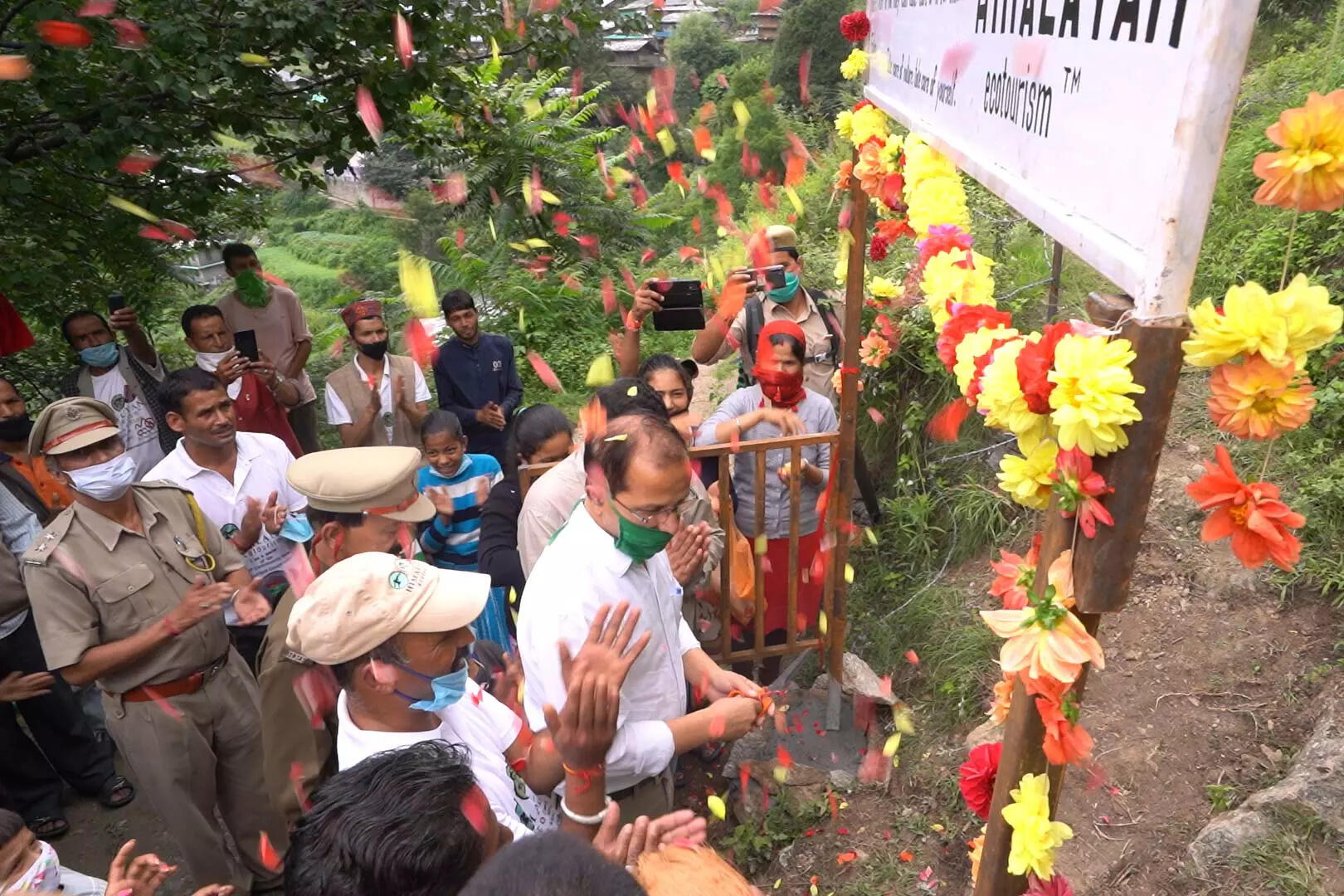
Although a heterogenous mass of people from the cities and urban centres are travelling to hills for short vacations, the people looking for an adventure, for a real travel experience, conscious of sustainable tourism are still a small minority, says Marchal.
Marchal who believes in nurturing the ecosystemic development with community support, sees a real danger looming as these tourists over-exploit, pollute and dump waste haphazardly in a terrain like Himalayan which is a climate change hotspot.
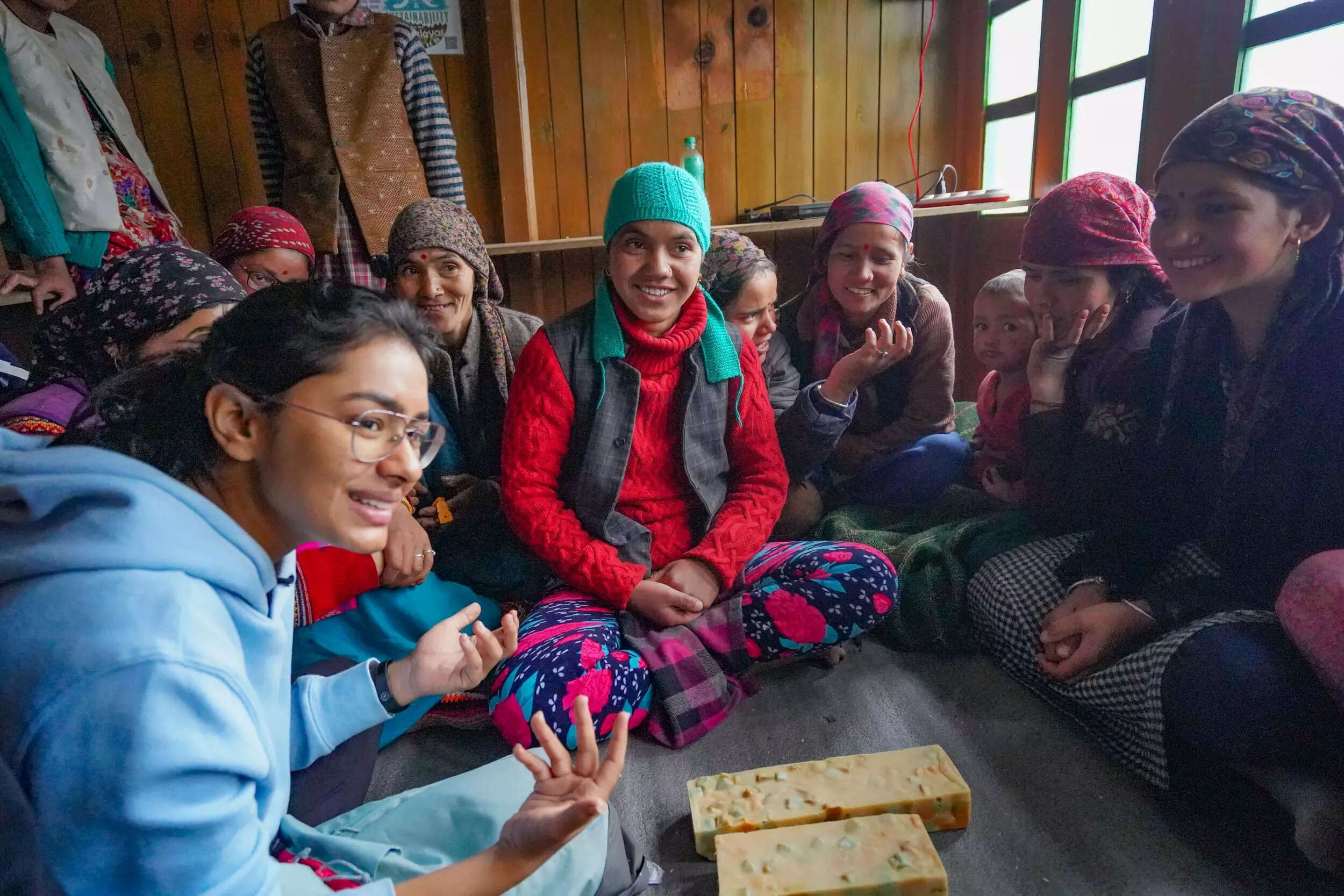
“Irresponsible tourism without eco-consciousness and awareness needs to be regulated,” he says. However, operators alone cannot contain this menace. Destination promoters and tourism practitioners have to pitch in, join hands and play an active role in it, feels Marchal. “Changing the tourist’s attitude is not something that is at the reach of the operators. It is the responsibility of destination promoters and tourism practitioners to organize the activities in such a way that the impact on the environment is as close as possible to zero. This may increase the cost of operating the tour for them and domestic tourists are always looking for the cheapest options, so they are worried as they need to face the competition.”
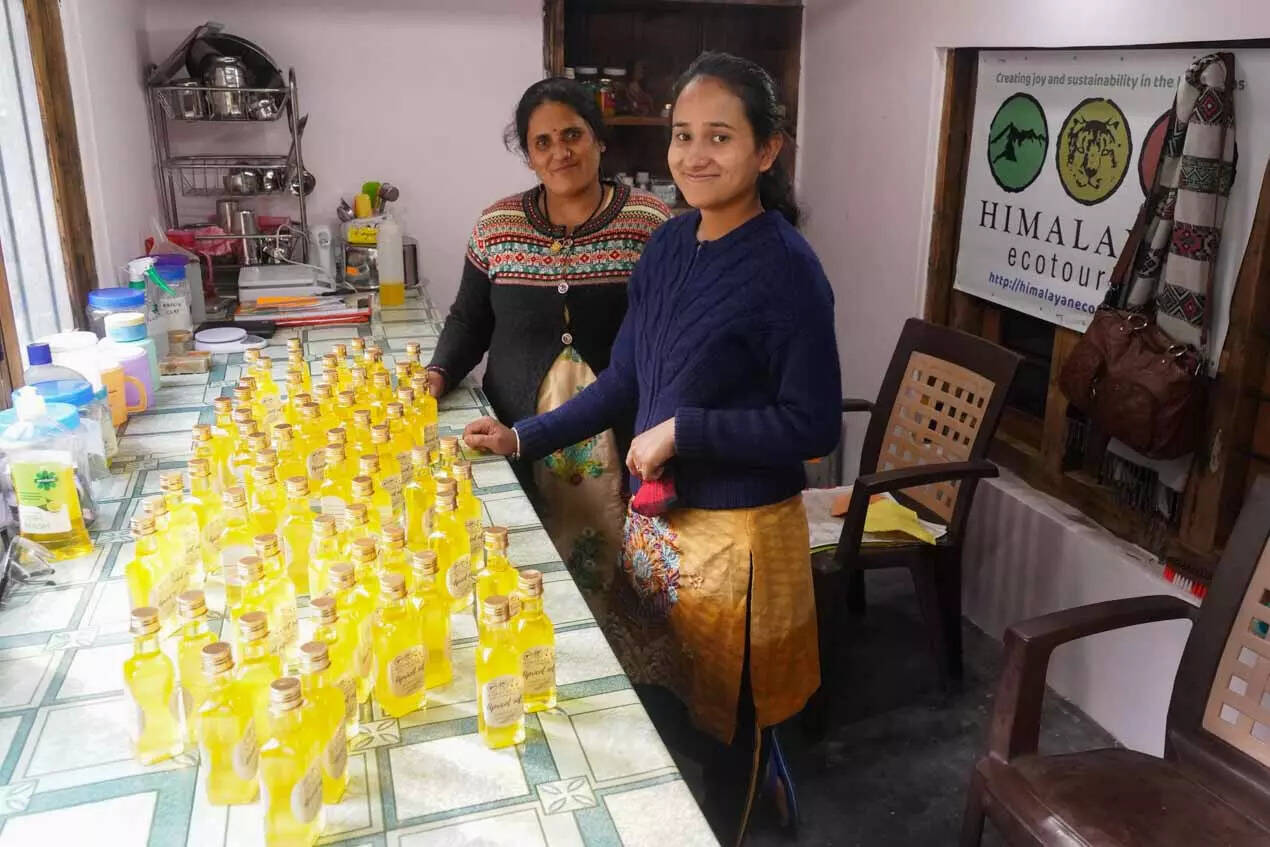
Machal explains the predicament better by citing how the villagers in some of the villages in Leh-Ladakh feel forlorn after international tourists flow stopped due to the covid19. Ladakh was a destination dominated by foreign tourists. These tourists were looking for real travel experiences - treks, nature, homestay, spirituality, etc. They used to travel to each and every corner of Ladakh on foot. This was good for rural tourism. Some of the economically disadvantaged farmers had a substantial income from this tourism, and the tourists were conscious enough to keep the place clean.
Now, there are no foreigners, but there is a huge number of domestic travellers reaching Leh by flight. They stay in Leh in a comfortable hotel and go for short visits to Nubra and Pangong lake for clicking a selfie. That is it. No more benefit for the rural Ladakh. Only privileged citizens of Leh, owners of big properties make very good money. The rest of Ladakh is forgotten, Marchal says.
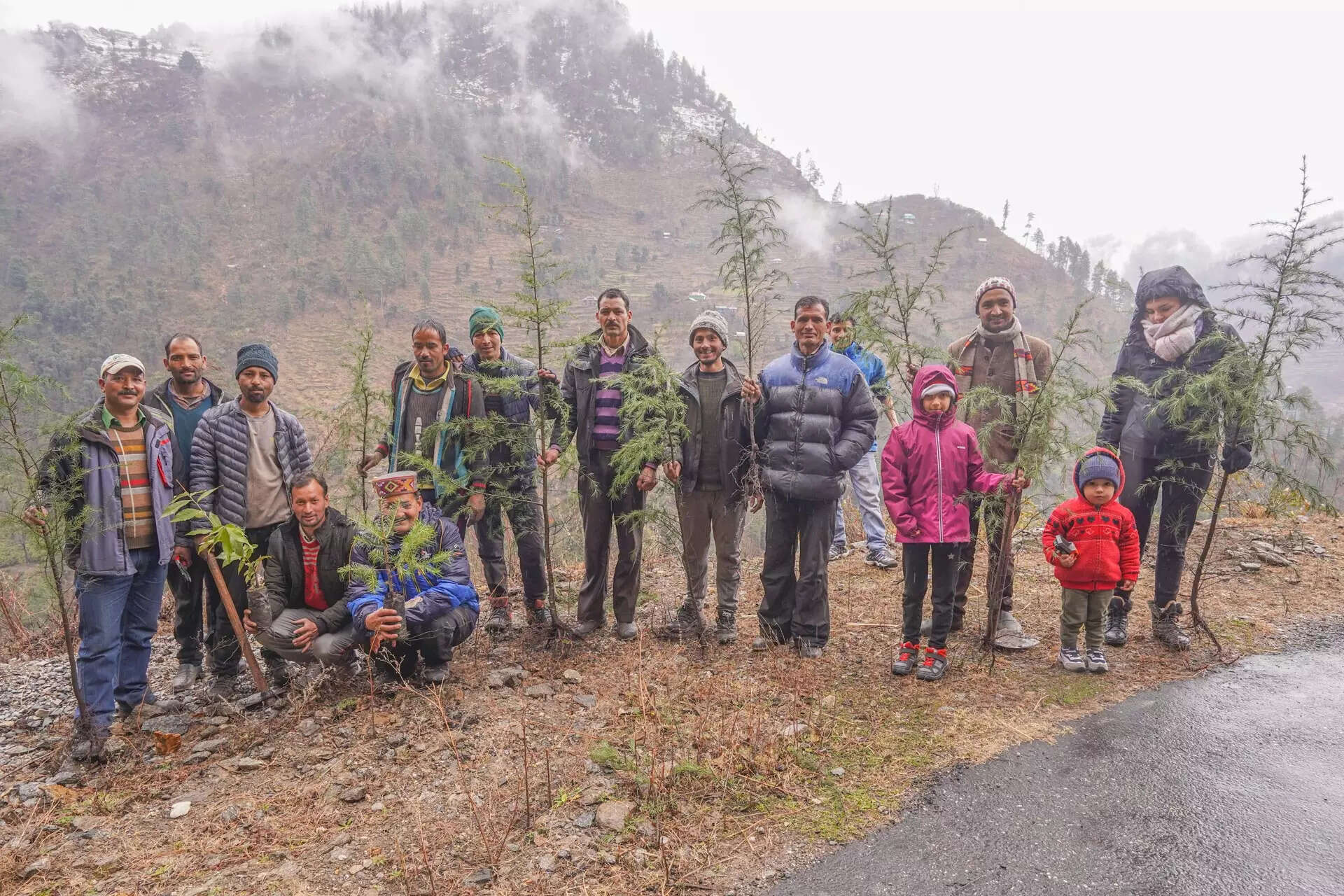
Marchal has solutions to offer to this new menace of revenge travel and the issues that create in sensitive ecosystems. “We need to make sure that the tourism infrastructures remain at a family level - homestay, guesthouses with a couple of rooms only. The authenticity of the place has to be preserved, and that means that the comfort level should not try to match with what is available in the tourist hubs. That will keep the careless travellers away from these places but it will surely attract mindful and conscious travellers looking for an experience, an encounter with the locals, their culture and natural environment.”
Madhya Pradesh Tourism: Connecting the mind to life's journey
Madhya Pradesh strikes a chord with tourists coming to visit the state at various stages of their life. The state's tourism department has developed various stages and dimensions of the journey of life of human beings by connecting them with religion, culture, spirituality, and health, to help uplift travellers while making tourism accessible and comfortable.
The
journey of life passing through different dimensions connects the human
mind with the divine. The human mind completes its life cycle
encompassing the journey from Lok to Parlok, from materialism to
spirituality, darkness to light and Atma to Parmatma. Chief Minister
Shivraj Singh Chouhan has taken a unique initiative to connect these
various stages and dimensions of life’s journey with tourism. To give
concrete shape to this initiative, the Department of Tourism has adopted
an inter-departmental and multi-pronged approach. The tourism
department has developed various stages and dimensions of the journey of
life of human beings by connecting them with religion, culture,
spirituality, and health, so that religious, cultural, and spiritual
upliftment of man is possible with comfortable and accessible tourism.
In
the journey of man from childhood to old age, there are constant
changes in his interests and needs. Keeping this in mind, the tourism
department has provided interesting activities like cycling, kite flying
and indoor games for children, paragliding for youth, adventure
activities like balloon safaris, wellness for
elderly people and Ayurvedic Panchakarma facilities at tourist spots.
In this way, Madhya Pradesh Tourism has been ranked third among the
‘Best Value Destinations’ in the year 2020 by a leading travel
publication, as a result of innovations and policy changes to conduct
enough interesting, adventurous and recreational activities at tourist
places for every age group.
Religious,
spiritual, and cultural upgradation is also necessary for the
development of personality, along with enrichment of knowledge. The
Department of Tourism, in collaboration with the Department of Culture
and Spirituality, has included various aspects of tourism for
personality development, including innovations such as Anubhuti tourism,
Adventure tourism, Rural tourism, Monsoon tourism, Religious tourism,
Wellness tourism and Rock art tourism providing interesting information
and experiences that will contribute to their personality development.
Tourism circuits are being developed by connecting other important
tourist and historical places near the major tourist places of the
state. While tourists will get an opportunity to get acquainted with
important historical buildings, museum, and local culture of the
surrounding areas along with tourism, local residents will have sources
for economic upliftment. This will be a win-win situation for both, as
it will ensure overall development of the region.
Villages
in six major cultural areas of Madhya Pradesh are being developed as
heritage villages under Rural Tourism programme. More than 1500
homestays will be developed in this. Tourists will get an opportunity to
get acquainted with the local culture, taste the local cuisine, buy
handicraft products near the tourist destination. This will also provide
employment opportunities at the local level. Recently, Ladpurakhas
village of Orchha has been nominated for the ‘Best Tourism Village’
category in the United Nations World Tourism Organization award by the
Union Ministry of Tourism. In the next 5 years, 100 villages of the
state will be developed from the point of view of rural tourism. In
these areas, Orchha, Khajuraho, Mandu, Sanchi, Pachmarhi, Tamia, Panna
National Park, Bandhavgarh National Park, Sanjay Dubri National Park, Pench and Kanha National Park etc. will be developed by selecting suitable sites.
Tourists
are spontaneously attracted towards the scenic natural beauty of the
state. Under Monsoon Tourism, a ‘Buffer mein Safar’ campaign was
launched in the jungle to introduce the tourists to the natural beauty
of the state during the rainy season. In this campaign, tourists enjoyed
safaris in the buffer zone of the forest. Also, hot air balloon safari
in Bandhavgarh National Park was the centre of attraction for tourists.
Tourists said that the greenery and beauty of the national park from a
height in a hot air balloon is an unforgettable experience.
An
action plan has been prepared by the District Archaeology and Tourism
Council in Panna for ‘Anubhuti Tourism’ with the aim of providing
informative knowledge during tourism to the citizens of the state. The
state’s Art Diamond Museum will be established here. Panna is the only
district in the state from where diamonds are obtained. Important
information related to diamonds will be provided to the tourists in the
museum.
With
a view to promote camping and adventure tourism activities, special
attention has been given to youth in the state under ‘Adventure
Tourism’. Exciting activities like cycle tours, water sports, camping,
hot air balloon safaris are being conducted for the youth at selected
tourist destinations. Along with this, music concerts are also being
organized for the youth in Mandu Utsav, Khajuraho Dance Festival and Jal
Mahotsav.
The
religious sites of the state and their spiritual experience hold a
special place. These religious sites are a direct means of contact with
God. In order to provide easy and efficient access to religious places
to the tourists, the Tourism department has developed comfortable
tourism facilities in the ancient cities of Ujjain, Chitrakoot,
Amarkantak, Maihar, Maheshwar, Mandsaur, Omkareshwar, Khajuraho, Gwalior
and Orchha etc. under Religious and Spiritual Tourism. Now tourists
will be able to enjoy entertainment and exciting activities at these
places along with religious and spiritual feeling at these places.
The
tourism department is also concerned about the health of senior and
elderly tourists. Under ‘Wellness Tourism’, wellness centers are being
set up at seven important tourist places of the state. Medical and
wellness facilities like Yoga, Panchakarma through Ayurveda system, Kaya
Chikitsa, mental health exercise will be available to the tourists at
the Wellness Centers. Welness centers will be also set up in units of
Tourism Department like Hotel Holiday Homes Amarkantak, Sailani Island
Resort Sailani, Hinglaj Resort Mandsaur near Gandhi Sagar Dam, White
Tiger Forest Lodge Bandhavgarh, Kipling Court and prominent cities like
Indore, Jabalpur, Gwalior and Orchha.
Safety
of women is a priority of the state. To increase the number of women
tourists in the state and to provide them a fear-free environment, the
department will implement ‘Safe Tourist Places Project for Women’. Women
will be linked with employment and self-employment by upgrading skills
in tourist places, so that they feel safe. Along with this, ‘Madhya
Pradesh Responsible Tourism Mission’ has been launched with the aim of
making tourism more responsible and sustainable. In this, skill
upgradation programs, handicrafts and arts, solid and liquid waste
management, environmental protection and accessibility audit will be
conducted at the local level.
The
tourism department is taking special care of the safety of tourists and
security at tourist places in view of Covid-19. Vaccination of all the
officers, employees and staff working in hotels and tourist places of
the state has been ensured. The Covid-19 protocols and guidelines issued
by the central government and state government from time to time are
being followed. All tourist places are completely safe for tourists. The
Department of Tourism has endeavoured to develop an integrated tourism
ecosystem by considering the interests of all age groups and the
resources of all the means of entertainment available to the tourists.
Along with providing comfortable and luxurious facilities to the
tourists, special care has been taken to enhance their knowledge besides
ensuring their religious and spiritual upliftment as well as health
promotion.
All
options to choose tourist destinations are available in Madhya Pradesh
for tourists coming from the country and abroad as per their interest at
different stages of their life’s journey. Everyone must visit Madhya
Pradesh once in their lifetime. Welcome to Madhya Pradesh, the heart of
the country!
=====================================================






No comments:
Post a Comment